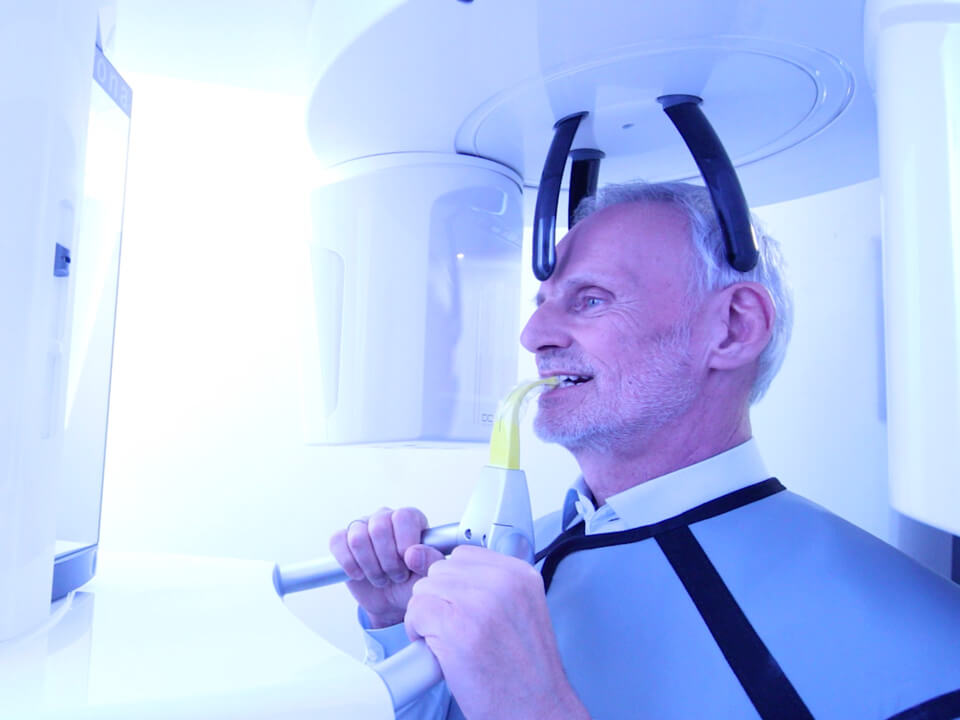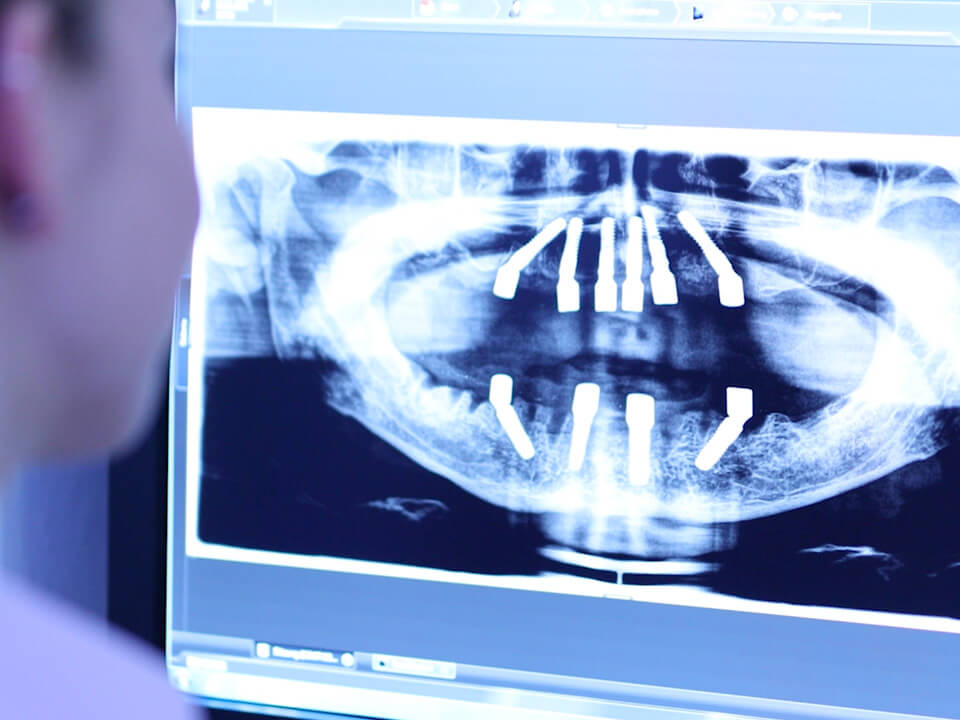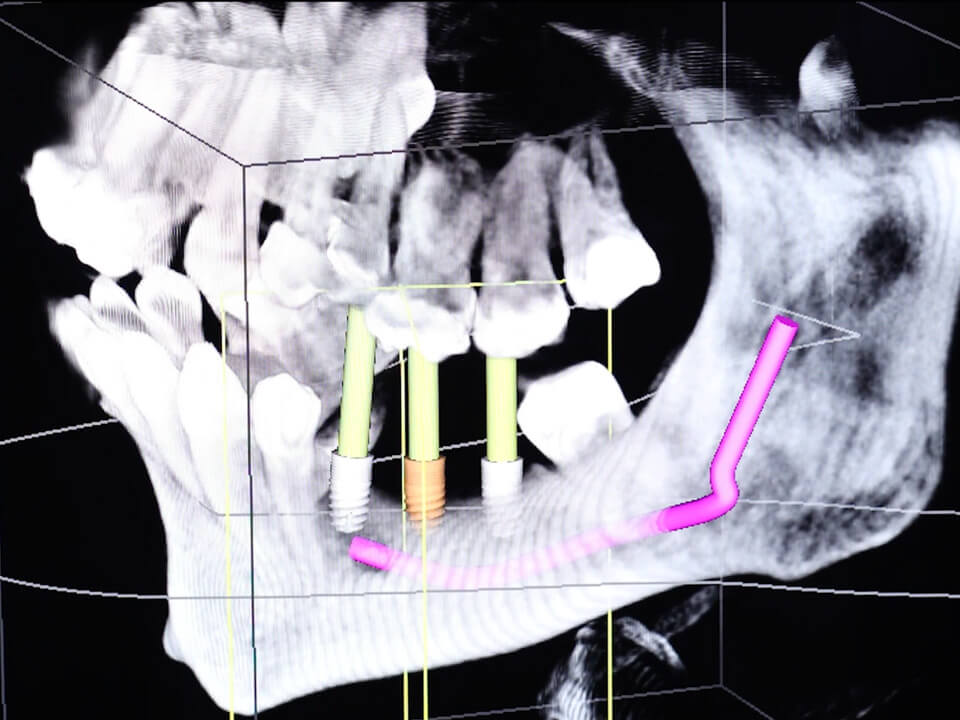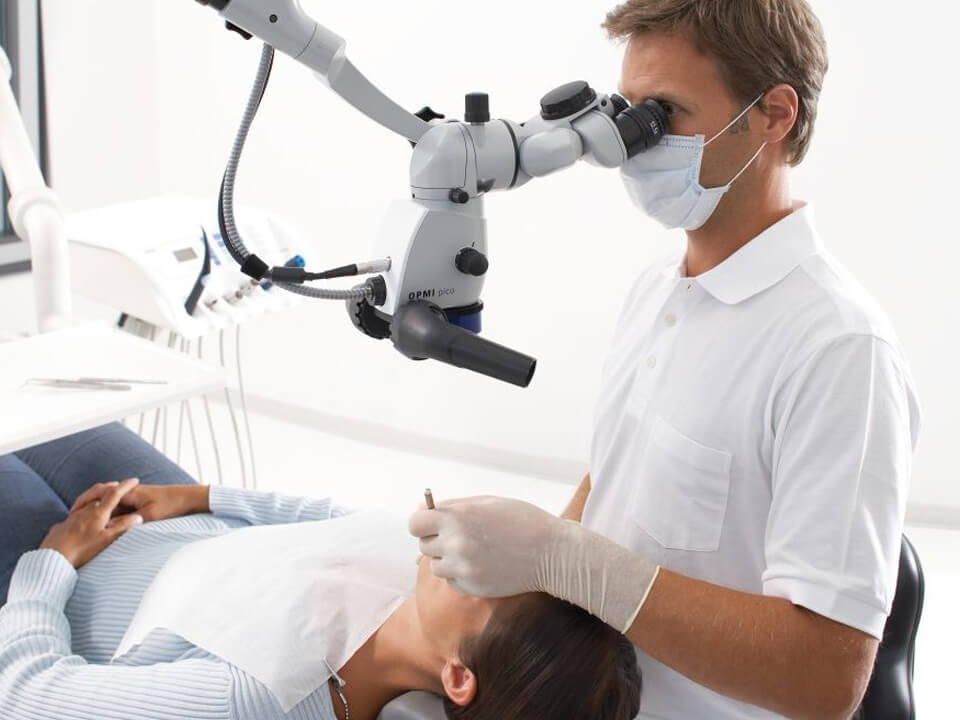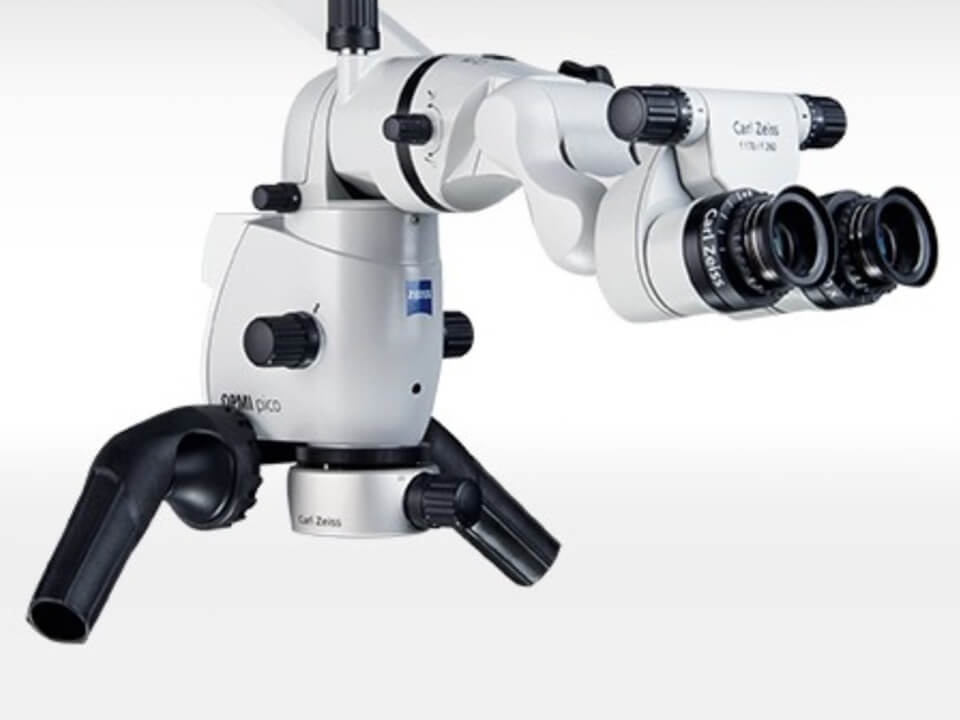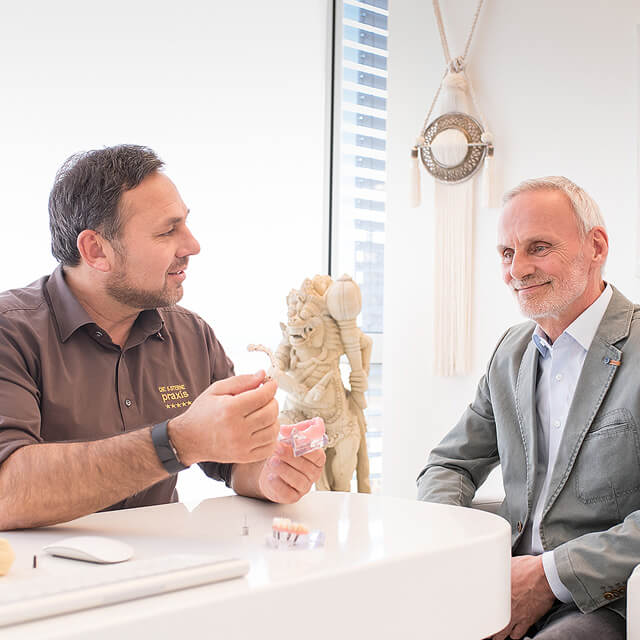Implantology & Mini Implants
Dental Implants are the Prostheses of the Moment
A dental implant is a ‘small’ pillar of biocompatible pure titanium, which replaces the root of the tooth. The implants are set into the jaw bones without any pain and grow together with the bone. Crowns, bridges or prostheses can then be fixed onto the artificial roots.
This solution for replacing teeth which have been lost is clearly the closest to genuine real teeth. Healthy teeth no longer need to be ground down, or used as anchors for prostheses, but can be left in their natural state, because the ultimate goal should be to keep your natural teeth healthy as long as possible.
Teeth on implants give you a more natural feeling than removable prostheses as they provide a more stable base. To sum this up, in short they provide “Added value to your quality of life”.
Modern Technology Guarantees Safe Results
As every jaw bone is different, an exact diagnosis regarding bone quality, the general state of health, and oral hygiene is indispensable for selecting the correct type of dental implant. If there is only a small amount of bone available, we will plan your dental implantation by means of computer tomography (CT) to reduce the risks and avoid complications.
Apart from this, lost bone substance can be built up again by means of special operating techniques or can be replaced. Through the assessment by means of computer tomography (CT) and a precisely dimensioned drilling template, secure installation of the implant is also guaranteed in critical regions of the bone.
Many patients today would like to acquire fixed teeth in a single day – ideally without lengthy healing periods during which they must get by with loose prostheses. The number one choice of concept for this today is: ‘SKY fast & fixed’ dental implants – fast and fixed.
In addition, here in our practice with our satisfaction guarantee and healing guarantee for implants, you are always erring on the side of safety.
Mini Implants
An End to Loose Prostheses
If a tooth is loose or is already missing, many patients fear they will be without any teeth for a while, during which time they must get by with a removable prosthesis, perhaps even for their entire life. But this does not necessarily need to be the case. Implants are the solution for almost every form of tooth loss.
The restoration of a toothless jaw using mini implants offers a gentle, pain-free, and extremely attractively-priced treatment concept. Just like normal implants, mini implants serve to stabilize a dental prosthesis and form the basis for stable prostheses.
An End to Loose Prostheses
Mini implants are thinner than classical implants and for this reason can be inserted with a minimum of effort. As the gums and tooth bed must be worked on less during the procedure, the length of the treatment is shorter for you and you can count on a reduced level of discomfort following the operation. Due to the gentle procedure, the implants can be inserted under local anesthesia.
We are happy to be of service to you, and are available for non-binding consultations. Read an interview by Dr. Gal with the DIS (German Implant Foundation) on the topic of Mini implants (German).
3D X-Ray Imaging
Navigated Implantation with 3D Imaging by DVT (Digital Volume Tomography –3D X-Ray Imaging)
Patients place constantly growing demands on the outcomes of implantological treatments. In addition, they wish for as short a treatment period as possible with reduced operative trauma at the same time.
A three-dimensional image of the implant site can be generated using spiral computed tomography (CT) or digital volume tomography (DVT). In contrast to the spiral CT, with DVT imaging only one rotation around the patient is required for the image. And depending on the type of device in each case, the field irradiated (field of view – FOV), and the tissue irradiated, the radiation dose for the patient with DVT is only about 20% of that of the CT.
As with all X-ray examinations, the ALARA principle (as low as reasonably achievable) also holds true for implantology. This comes about through the current X-ray regulation which specifies that the benefit of an intervention for the patient must be uppermost.
In order that the diagnostic data obtained in the DVT can be successfully realized intra-operatively, we work with implant planning software. In complex cases a radiopaque scan template can be used in order that the positions of the implants can be selected from prosthetic points of view. The navigation software determines the implant position exactly. The transfer to a drilling template for a navigated surgical protocol is realized via a CAD/CAM process. The intra-operative fixation of the drilling template is dependent on the residual dentition and the surgical procedure planned.
Using 3D navigated implant surgery, the prosthetic result being striven for can often be achieved more securely.
A Tip from Dr. Gal
“Mini implants: finally we have a stable prosthesis – no more wobbling or sliding about. For an increased quality of life.”


